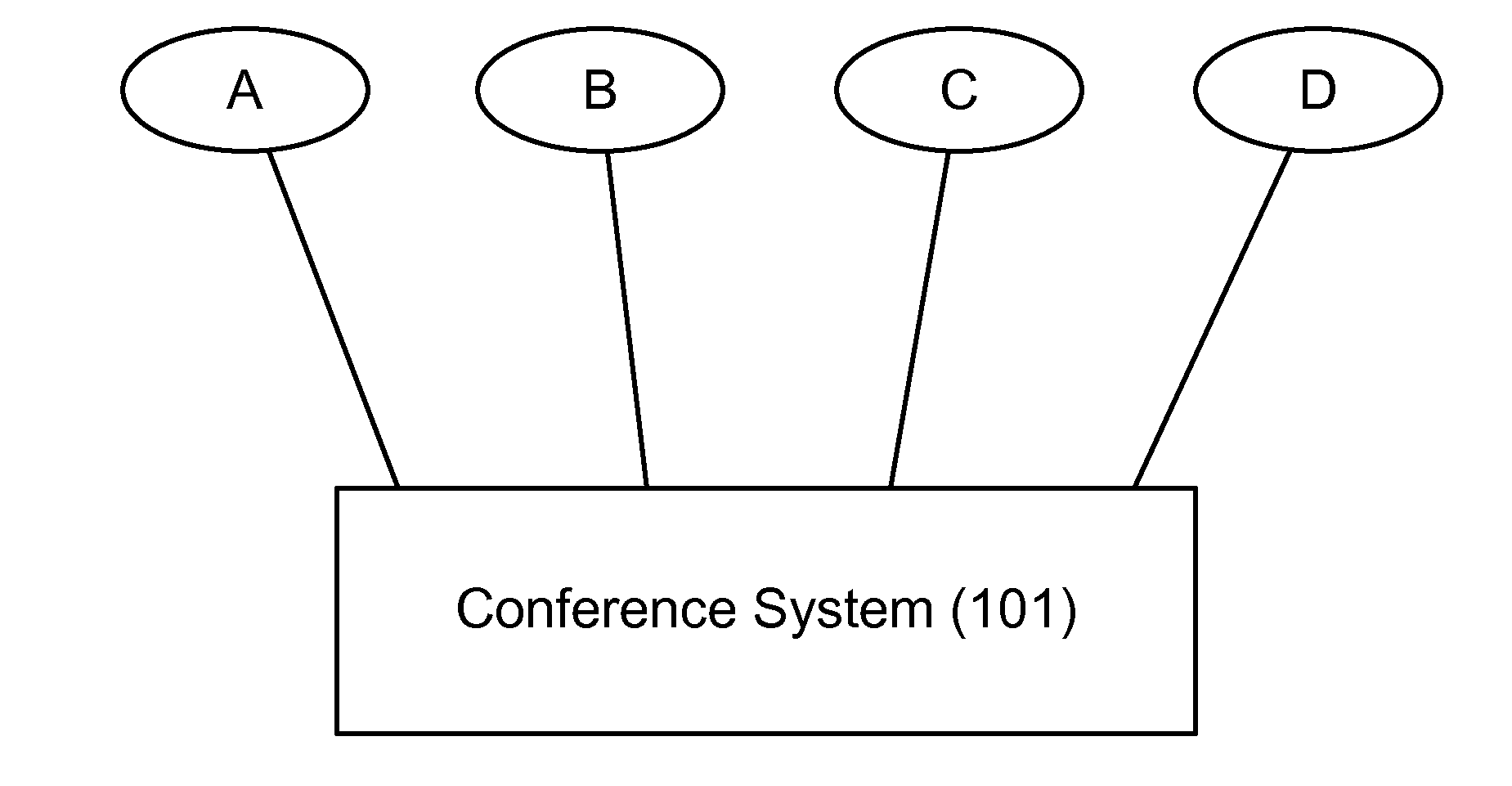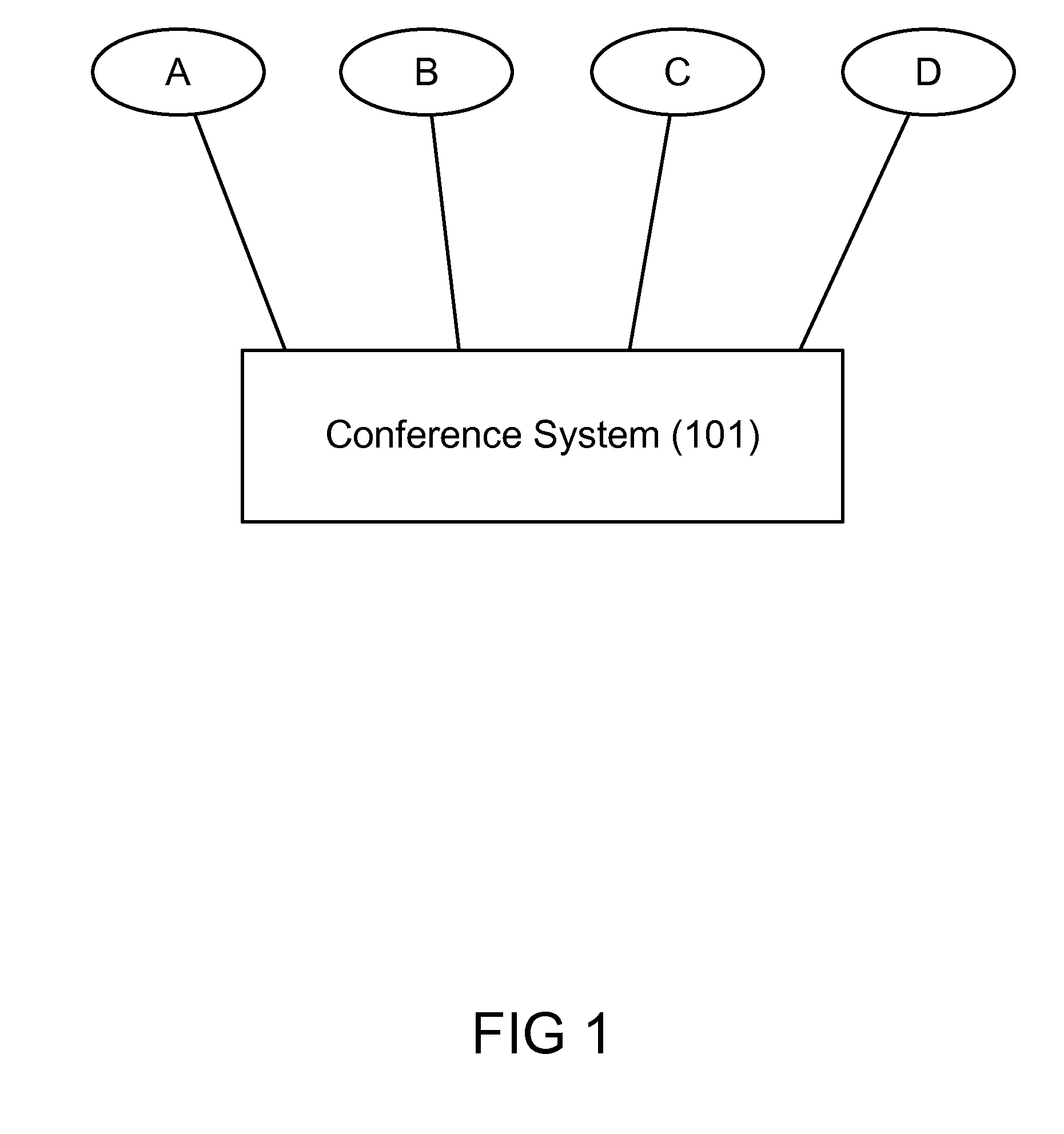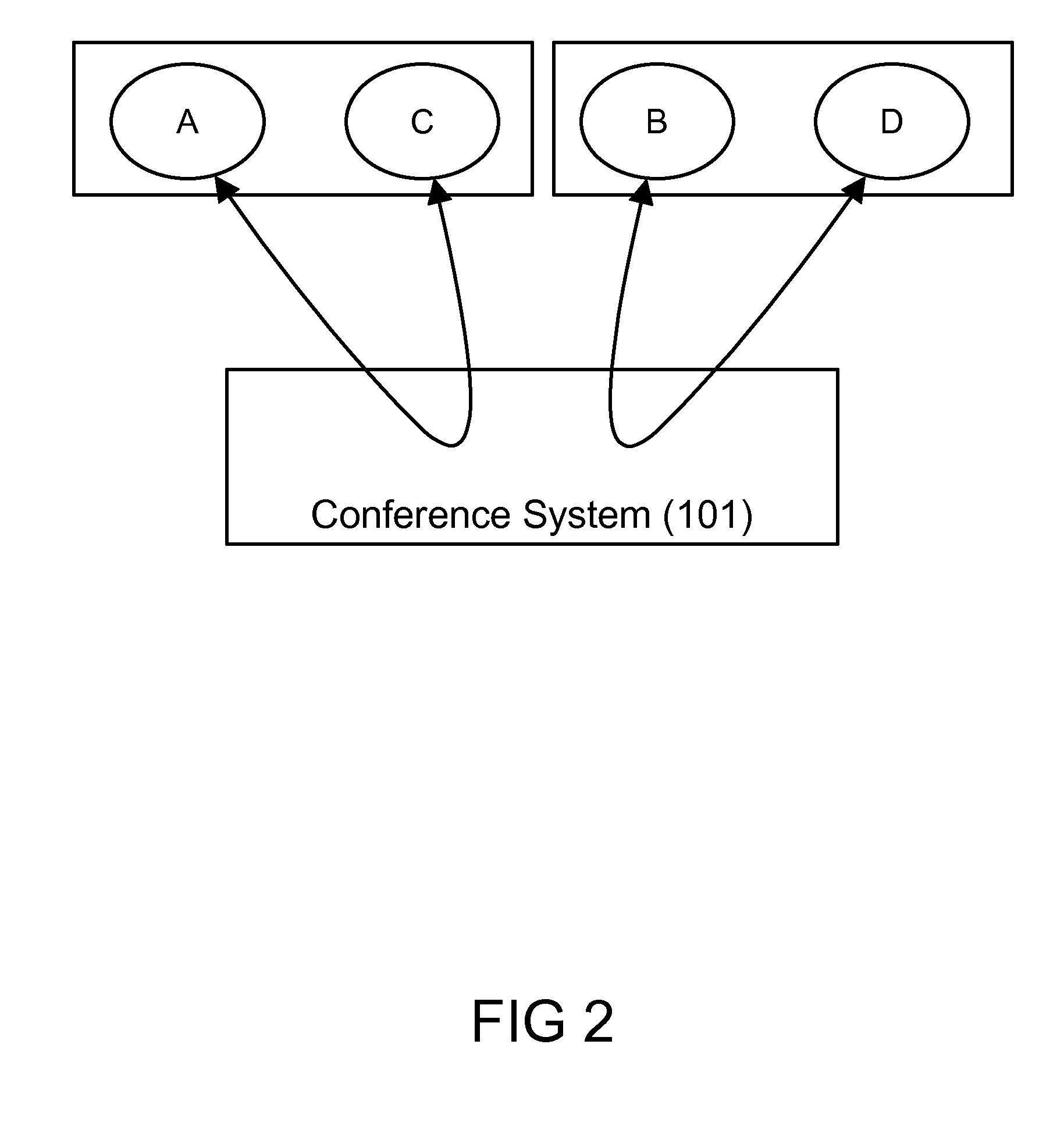Conference call peer-driven degraded line detection and removal
a technology of degraded lines and conference calls, applied in the direction of special services for subscribers, surveillance/monitoring/testing arrangements, substation equipment, etc., can solve the problems of increased overall equipment cost, significant drawbacks in methods, and signal degradation
- Summary
- Abstract
- Description
- Claims
- Application Information
AI Technical Summary
Benefits of technology
Problems solved by technology
Method used
Image
Examples
Embodiment Construction
[0008]An embodiment of the system works by placing a function into the conference calling server (101) which can be activated by any conference call administrator (or possibly a user in a controlled environment).
[0009]The following is an example of a conference call with 4 participants as shown in FIG. 1. The participants are A, B, C and D. In this case, user A is the admin. As shown in the flow chart of FIG. 3, if noise is detected (301) on the conference call and A decides (possibly after being asked by another caller) to start a peer driven search for a noisy line, the callers are paired up (303). As a result, for example A pair up with C and B pairs up with D as shown in FIG. 2. This could work for any number of users (although cases of odd number of participants demonstrate a special case as discussed below and is not shown in the figures).
[0010]In one embodiment, the audio between the paired participants are routed directly to each other (FIG. 2). The participants are asked to...
PUM
 Login to View More
Login to View More Abstract
Description
Claims
Application Information
 Login to View More
Login to View More - R&D
- Intellectual Property
- Life Sciences
- Materials
- Tech Scout
- Unparalleled Data Quality
- Higher Quality Content
- 60% Fewer Hallucinations
Browse by: Latest US Patents, China's latest patents, Technical Efficacy Thesaurus, Application Domain, Technology Topic, Popular Technical Reports.
© 2025 PatSnap. All rights reserved.Legal|Privacy policy|Modern Slavery Act Transparency Statement|Sitemap|About US| Contact US: help@patsnap.com



